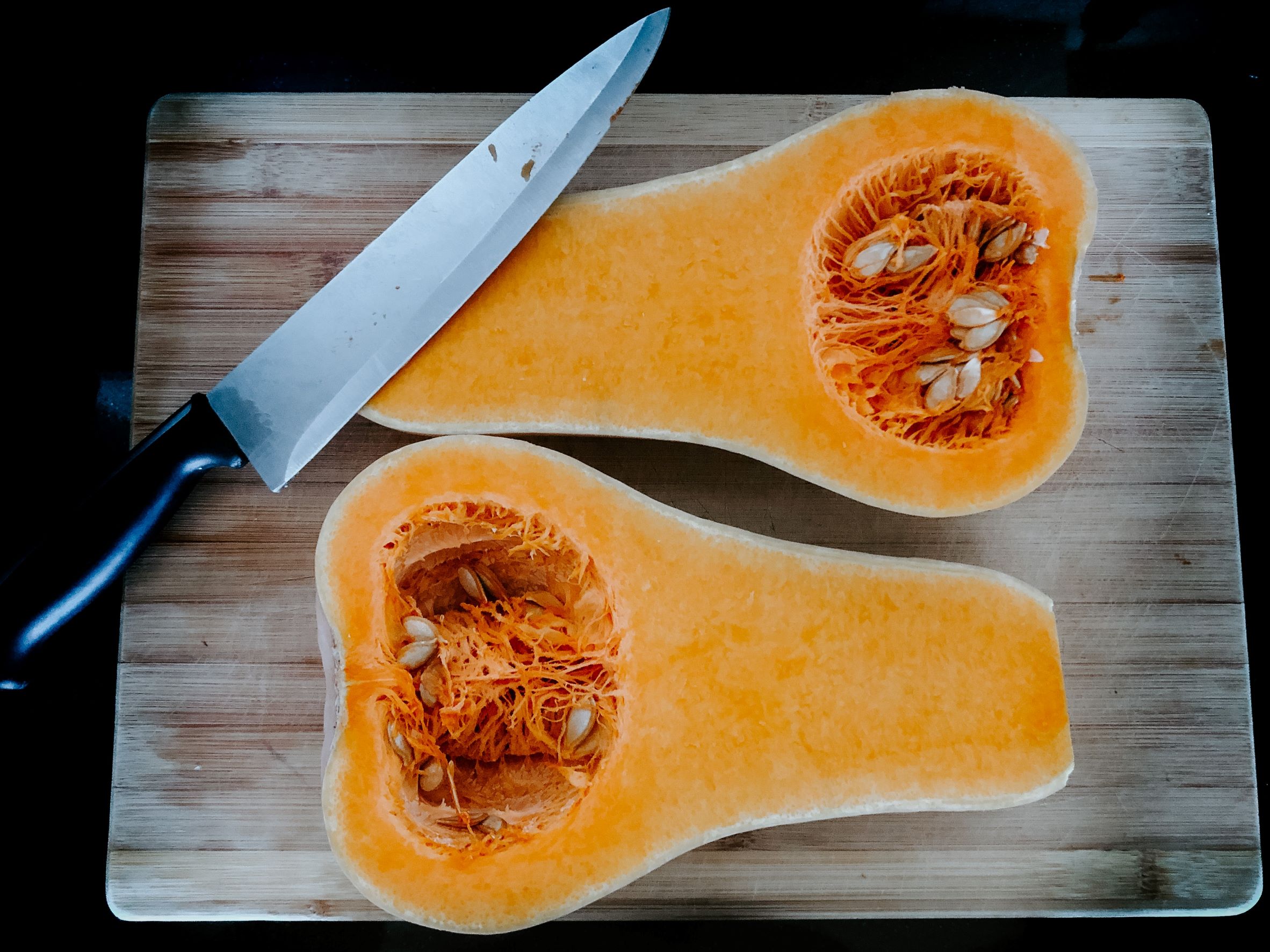Why Squash recipes are good at menopause?
For a long time, I couldn’t find squash recipes I enjoyed. I often found squash recipes were too sweet or even watery! I didn’t give up on my quest to find these squash recipes because I knew what a good food squash is for menopause. It is a high fibre lower carbohydrate option much better suited at menopause. You can recognise them by their pale orangey colour and tube-like shape at the top and more bulbous at the bottom. They are really a fruit, part of the squash and pumpkin family. They are absolutely my favourite autumnial vegetable.
Menopause is a transitional time when our hormones fluctuate and this affects everything from blood sugar balance to gut health. Including a range of different coloured vegetables ensures the right food for the health promoting gut bacteria and a plentiful supply of immune supporting antioxidants. Oestrogen declines over the menopausal transition and has anti-inflammatory properties so an anti-inflammatory food makes complete sense.
Nutrition
Butternut squash is an excellent source of many vitamins and minerals that are key at menopause. It’s high in vitamin A, vitamin C, magnesium, and potassium. It also has good levels of other nutrients that are important at menopause.
It is highest in provitamin A from carotenoids which are plant pigments that also provide butternut squash its colour. These compounds are converted in your body to retinal and retinoic acid the active forms of vitamin A. Vitamin A is essential for regulating cell growth so key for the whole body. Specifically, it is recognised for its role in eye and skin health, bone health, and immune function.
Vitamin C is needed for immune function, collagen synthesis, wound healing, and tissue repair. Around menopause our immunity is challenged, and collagen reduces dramatically. Both vitamins A and C are antioxidants protecting your cells from damage caused by unstable molecules called free radicals.
B vitamins folate and B6 are required for energy and red blood cell formation. Both of which are key when our monthly cycles can be heavy and energy low at perimenopause. Vitamin E is also a very powerful antioxidant and is associated with reducing the risk of age-related conditions, such as Alzheimer’s disease. It is also good for the joints and skn.
The minerals Magnesuim, potassium and manganese are important for bone health. Post menopause we lose the bone protective properties of oestrogen so having a selection of minerals in our diet can literally support us! As I have explained elsewhere it is not just about calcium.
Choosing Butternuts
- They should feel heavier than their size.
- The skin should not be wrinkled
- No soft or mouldy patches.
- A thick neck will allow for more even-sized slices
- Roasting and scooping out the flesh is often easier than peeling!
- YouTube provides good videos on preparing them.
Squash Recipes
The obvious choice is soup and there are lots of simple squash soups like Jamie Oliver’s with onion, carrot garlic and chicken stock and perhaps some herbs and seasoning. I prefer a bit of spice as it goes well with the sweetness of squash. So that’s what is included below. It’s also great in curries or a winter salad.
Butternut Squash, Chilli and Coconut Milk Soup
Adapted from the Easy Peasy Foodie
Ingredients
- 1 tablespoon olive oil
- 1 onion diced
- 1 butternut squash (approx. 1kg/2lb), peeled and chopped into 1cm cubes
- ½ teaspoon chilli flakes or to taste
- 2 cloves garlic grated or crushed
- 2 cm ginger grated
- Salt and pepper to taste
- 400 ml tin coconut milk
- Juice of ½ lime
- 2 tablespoons coriander leaves chopped, plus extra for garnish
- Pumpkin seeds and sliced fresh red chilli for garnish (optional)
Instructions
Put the olive oil in a large saucepan and add the diced onion. Fry on a gentle heat with the lid on for 5 minutes until softened but not brown. Stir occasionally.
When the onions are softened, add the cubed butternut squash, garlic, chilli flakes and ginger and fry on a low heat for 2 minutes.
Add the coconut milk, bring to the boil then simmer for 15-20 minutes until the butternut squash is soft.
Turn the heat off and add the juice of half a lime plus the chopped coriander and blitz with a blender until smooth.
Serve the soup decorated with coriander leaves, pumpkin seeds and slices of fresh red chilli.
References
https://www.ncbi.nlm.nih.gov/pmc/articles/PMC2854912/
https://www.ncbi.nlm.nih.gov/pmc/articles/PMC3936685/



